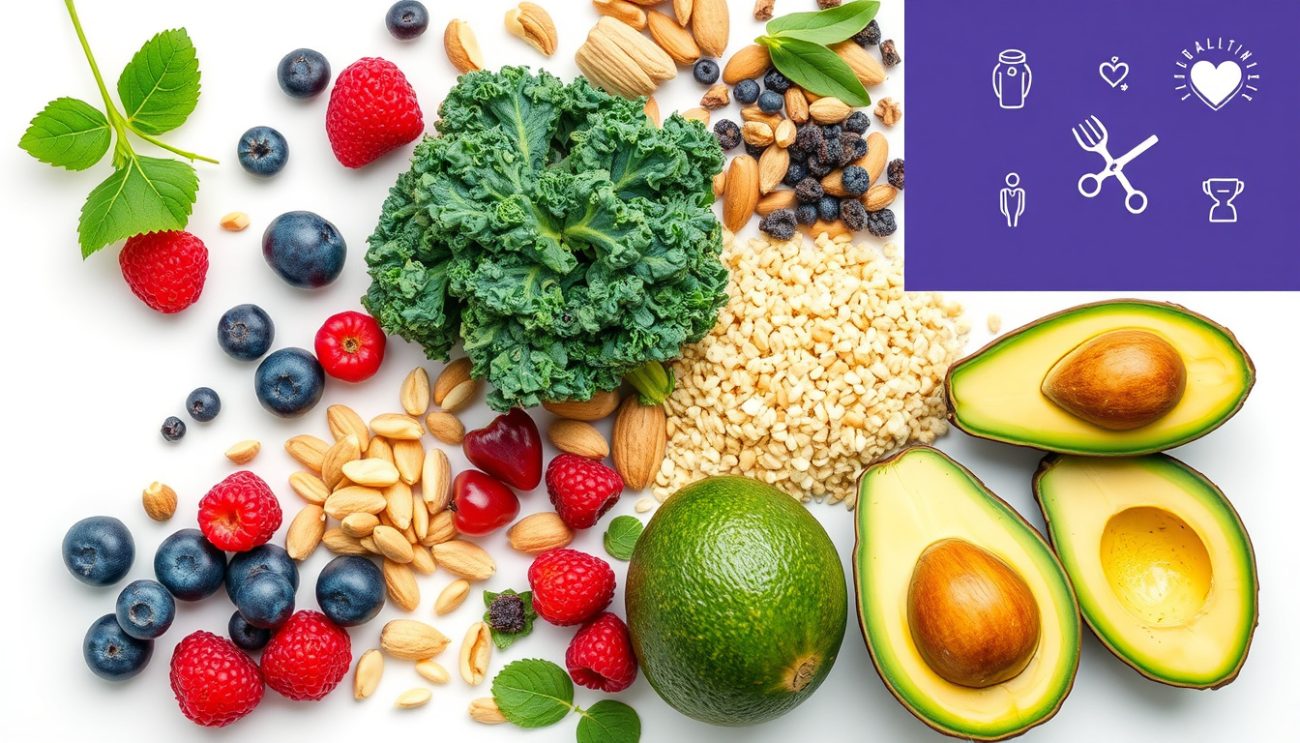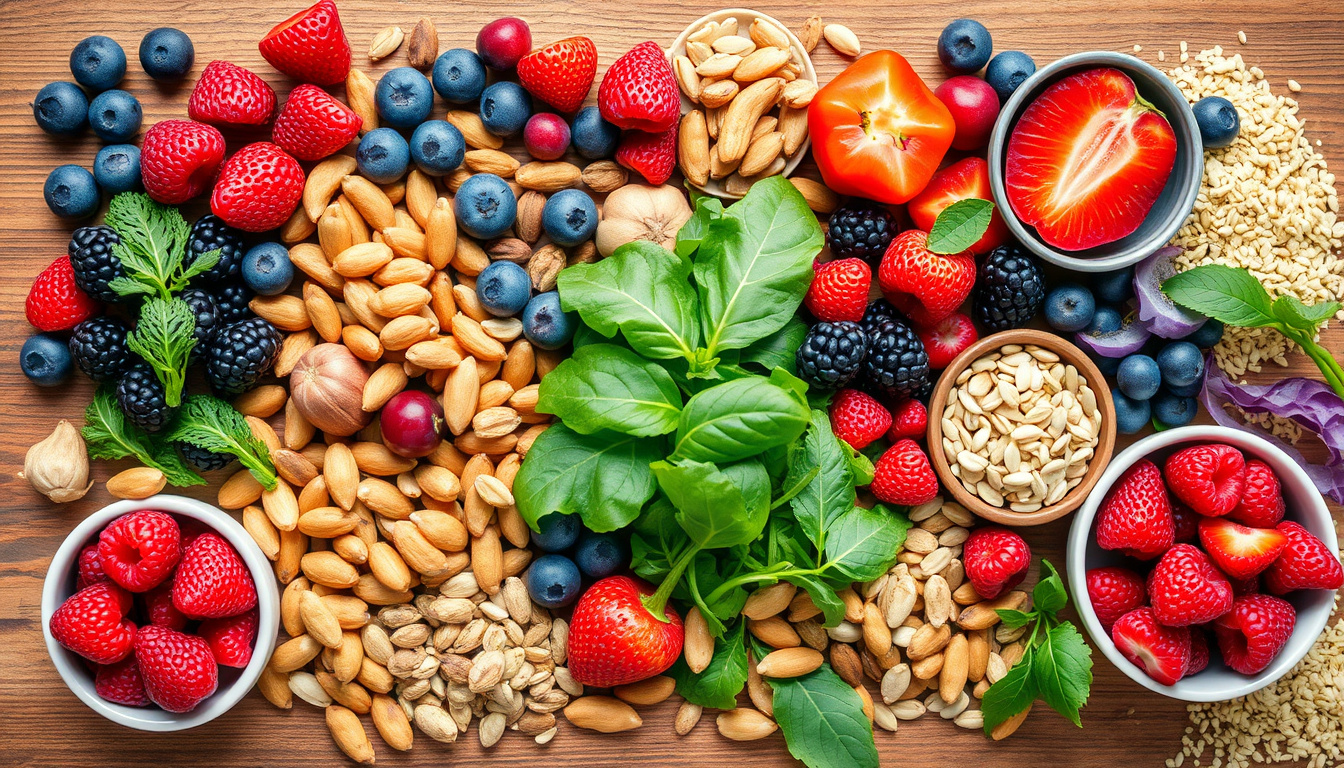Unlocking the Power of Nutrition: The Ultimate Superfoods List for a Healthier You
In today’s health-conscious world, the term “superfoods” has gained tremendous popularity. These nutrient-rich foods are celebrated for their potential to boost health, reduce inflammation, and prevent chronic diseases. While no single food offers a cure-all,

In today’s health-conscious world, the term “superfoods” has gained tremendous popularity. These nutrient-rich foods are celebrated for their potential to boost health, reduce inflammation, and prevent chronic diseases. While no single food offers a cure-all, integrating a diverse array of these nutrient-dense superfoods into your diet can significantly enhance overall well-being and support a balanced, healthy lifestyle. This article synthesizes expert insights from leading health authorities to present the ultimate superfoods list, along with tips for including them in your daily eating routine.

What Are Superfoods?
The term superfood is often used to describe foods laden with vitamins, minerals, antioxidants, and beneficial phytonutrients that contribute to health promotion and disease prevention. However, it is important to understand that the label is more of a marketing term than a scientific classification. No single food, regardless of its nutritional profile, can provide all the nutrients your body needs. The best approach to wellness is maintaining healthy dietary patterns rich in various fruits, vegetables, whole grains, lean proteins, and healthy fats.
The Ultimate Superfoods List
1. Dark Leafy Greens
Examples: Kale, spinach, swiss chard, collard greens, turnip greens
Dark leafy greens are nutritional powerhouses containing fiber, vitamins A, C, K, calcium, iron, magnesium, and antioxidants like carotenoids. Their anti-inflammatory properties may help reduce risk of heart disease, type 2 diabetes, and certain cancers. Include them in salads, smoothies, stir-fries, or soups.
2. Berries
Examples: Blueberries, strawberries, raspberries, blackberries, cranberries
Berries are rich in fiber, vitamin C, and a high concentration of antioxidants (such as anthocyanins), which combat oxidative stress and inflammation. Regular consumption has been linked to improved heart health and a reduced risk of cancer and chronic inflammatory conditions. Add berries to yogurt, oatmeal, or enjoy them as a fresh snack.
3. Fish (Especially Fatty Fish)
Examples: Salmon, mackerel, sardines, trout, tuna
These provide high-quality protein and are excellent sources of omega-3 fatty acids (EPA and DHA), which support heart and brain health by lowering triglycerides and reducing inflammation. Opt for fresh, frozen, or canned fish and include in meals at least twice weekly.
4. Nuts and Seeds
Examples: Almonds, walnuts, pistachios, chia seeds, flaxseeds, pumpkin seeds
Nuts and seeds offer a combination of plant protein, fiber, healthy monounsaturated and polyunsaturated fats, and antioxidants. Regular consumption is associated with reduced heart disease risk and can support weight management when eaten in moderation. Enjoy as snacks, in salads, or blended into smoothies.
5. Legumes
Examples: Beans (black, kidney, garbanzo), lentils, peas, soybeans
Legumes are excellent sources of plant-based protein, fiber, folate, iron, and other minerals. They contribute to improved blood sugar control, heart health, and weight regulation by promoting fullness. Incorporate legumes into soups, stews, salads, or as spreads such as hummus.
6. Whole Grains
Examples: Brown rice, quinoa, bulgur, oats, whole wheat
Whole grains are rich in fiber (both soluble and insoluble), B vitamins, and plant compounds that aid digestion, lower cholesterol, and support blood sugar regulation. Choose whole grains over refined grains for a better nutrient profile and include them in meals as cereals, side dishes, or baked goods.
7. Yogurt and Kefir
These fermented dairy products are notable for calcium, high-quality protein, and probiotics—beneficial bacteria that support gut health, digestion, and immunity. Opt for plain, unsweetened varieties and add fresh fruit or nuts to enhance flavor without added sugars.
8. Olive Oil
Rich in monounsaturated fats, vitamin E, and polyphenols, olive oil is well-known for its heart-protective qualities. It can replace butter or margarine in cooking, dressings, and sauces. Extra virgin olive oil is preferred for maximum antioxidant benefits.
9. Cruciferous Vegetables
Examples: Broccoli, cauliflower, Brussels sprouts, cabbage, kale
These vegetables provide fiber, vitamins C and K, and phytochemicals such as sulforaphane that may have cancer-preventative effects. They are tasty steamed, roasted, or added to stir-fries and soups.
10. Garlic
Garlic contains manganese, vitamin C, B6, and sulfur compounds like allicin with anti-inflammatory, antimicrobial, and heart health benefits. Use fresh garlic to flavor dishes such as sauces, roasted vegetables, and marinades.
11. Green Tea
Green tea is rich in antioxidants called catechins, particularly epigallocatechin gallate (EGCG), which have anti-inflammatory properties and may reduce the risk of heart disease, certain cancers, and aid weight management. Enjoy as a warm or iced beverage.
12. Tomatoes
A great source of vitamin C, potassium, and lycopene—an antioxidant associated with reduced risk of prostate cancer. Cooking tomatoes with healthy fats like olive oil enhances lycopene absorption. Use them fresh in salads or cooked in sauces and soups.
13. Eggs
Eggs provide high-quality protein, B vitamins, choline, and antioxidants lutein and zeaxanthin that support eye health. Research shows moderate intake (up to 6–12 eggs per week) is safe for most people and may improve “good” HDL cholesterol.
How to Make Superfoods Part of Your Diet
- Mix and match: Combine different superfoods to create colorful, nutrient-rich meals.
- Meal prep: Prepare salads, soups, or grain bowls ahead of time incorporating a variety of superfoods.
- Snack smart: Choose nuts, seeds, berries, or yogurt for nutrient-dense snacks.
- Cook creatively: Try roasting cruciferous vegetables with olive oil and garlic or blending leafy greens into smoothies.
Conclusion
Incorporating a variety of superfoods into your daily diet supports optimal health by providing essential nutrients, antioxidants, and bioactive compounds. Though no single superfood is a cure-all, diverse and balanced eating patterns rich in these foods can reduce the risk of chronic diseases and promote overall vitality. Embrace these nutrient-dense foods as part of your lifestyle and unlock the power of nutrition for a healthier you.
References: Information compiled and synthesized from Harvard Health Publishing (2022) and Healthline (2023).



